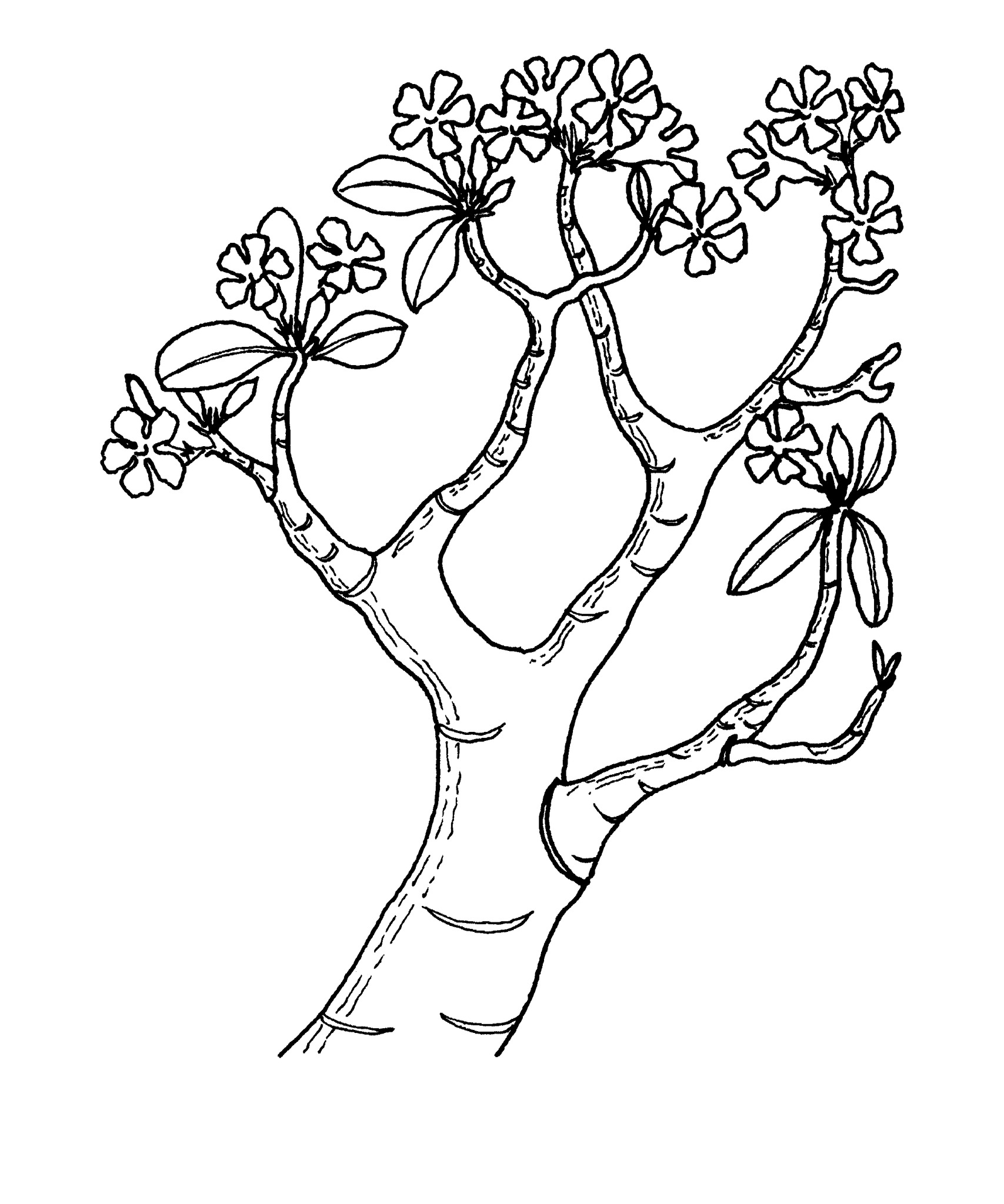
Latinised from the vernacular name for A. obesum, Ö’ddajin or Aden.
Shrubs or small trees, deciduous; latex clear or white. Stems fleshy-succulent, without spines. Leaves alternate, sessile to stalked; blade well developed; colleters absent at base. Inflorescence terminal, thyrsoid. Flowers scentless, stalked. Corolla bell- to funnel-shaped; tube cylindrical; lobes convolute in bud, overlapping to the right. Corolline corona of 5 scales present. Stamens enclosed to protruding, attached near top of tube, converging and sticking to style head, anthers with long filiform apical appendages. Disk absent. Fruit with carpels separate, a pair of woody follicles dehiscent along the ventral suture; seeds numerous, flattened, oblong to truncated, not winged and with hair tufts at either end.
One species and several cultivars commonly cultivated, although other species are grown by succulent plant enthusiasts. Frost-sensitive and requires glasshouse culture in most areas.
Cuttings, seeds or by grafting onto stock of Adenium or Nerium.
Succulent shrubs or small trees with unarmed, solid, fleshy-succulent stems.
5 species in Africa and Arabia.
Codd (1963), Lavranos (1966), Plaizier (1980), Forster (1998), Rowley (1999).
Source: (2002). Apocynaceae. In: . Horticultural Flora of South-eastern Australia. Volume 4. Flowering plants. Dicotyledons. Part 3. The identification of garden and cultivated plants. University of New South Wales Press.
